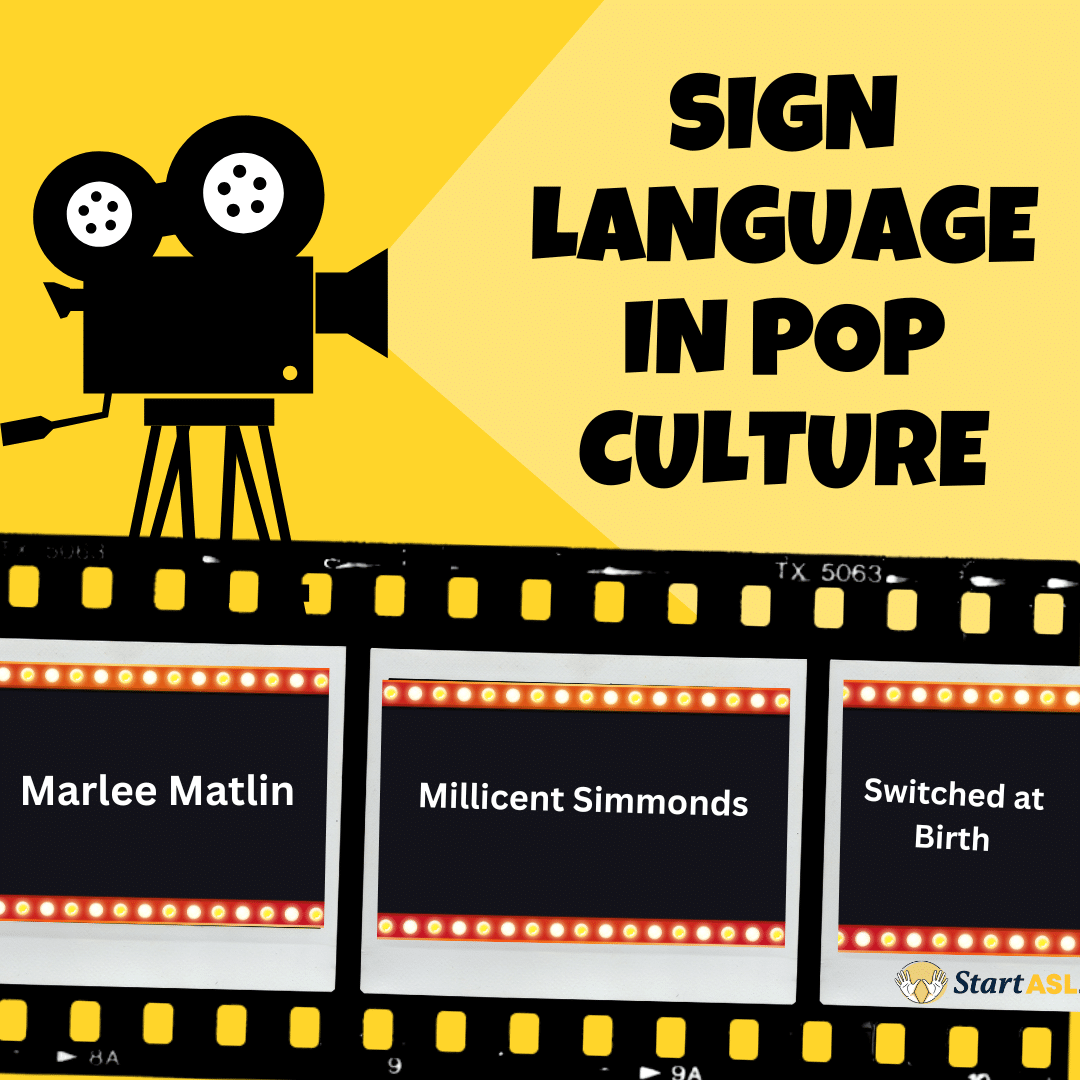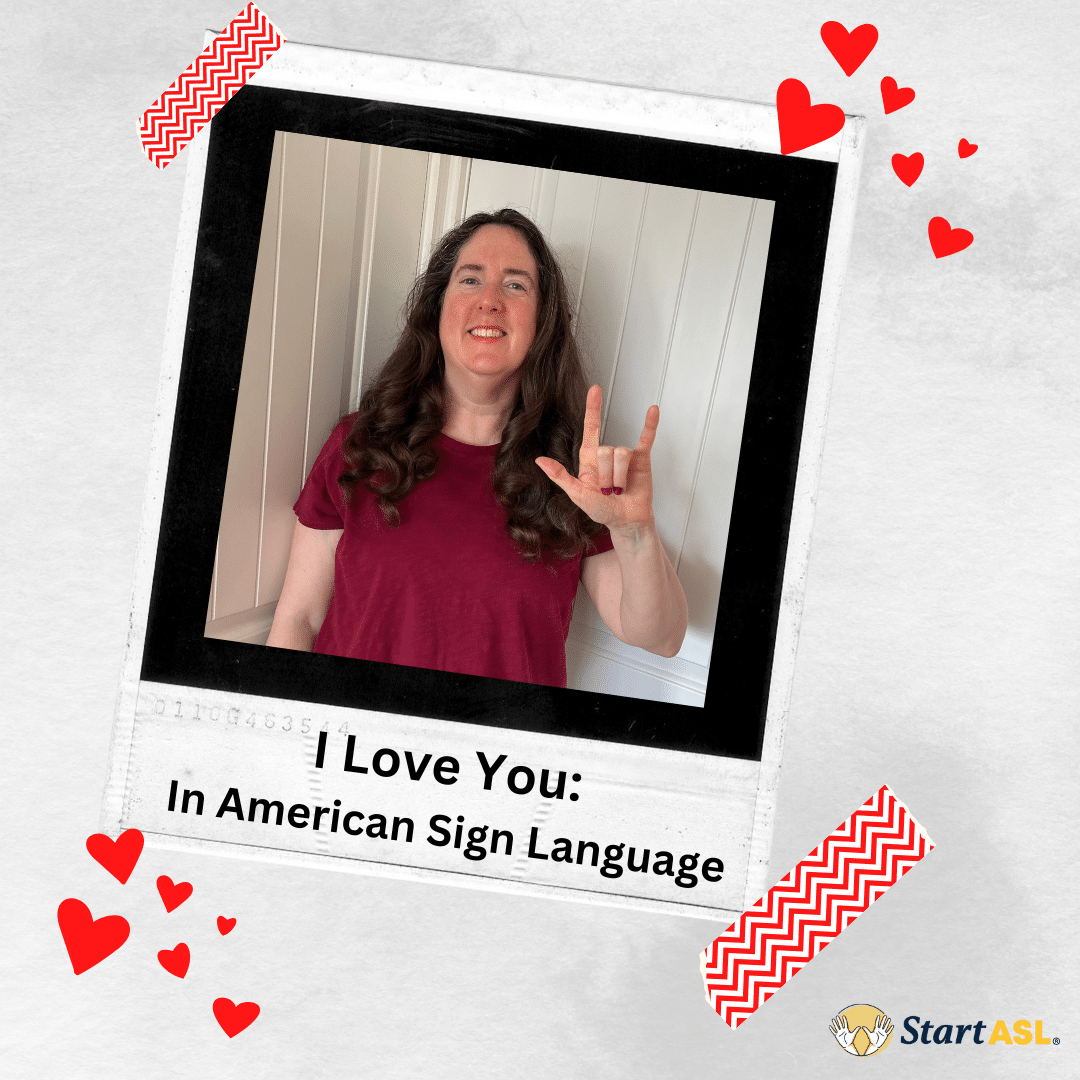
Deaf People at the Movies
- by Katelyn Cheng
- No Comments
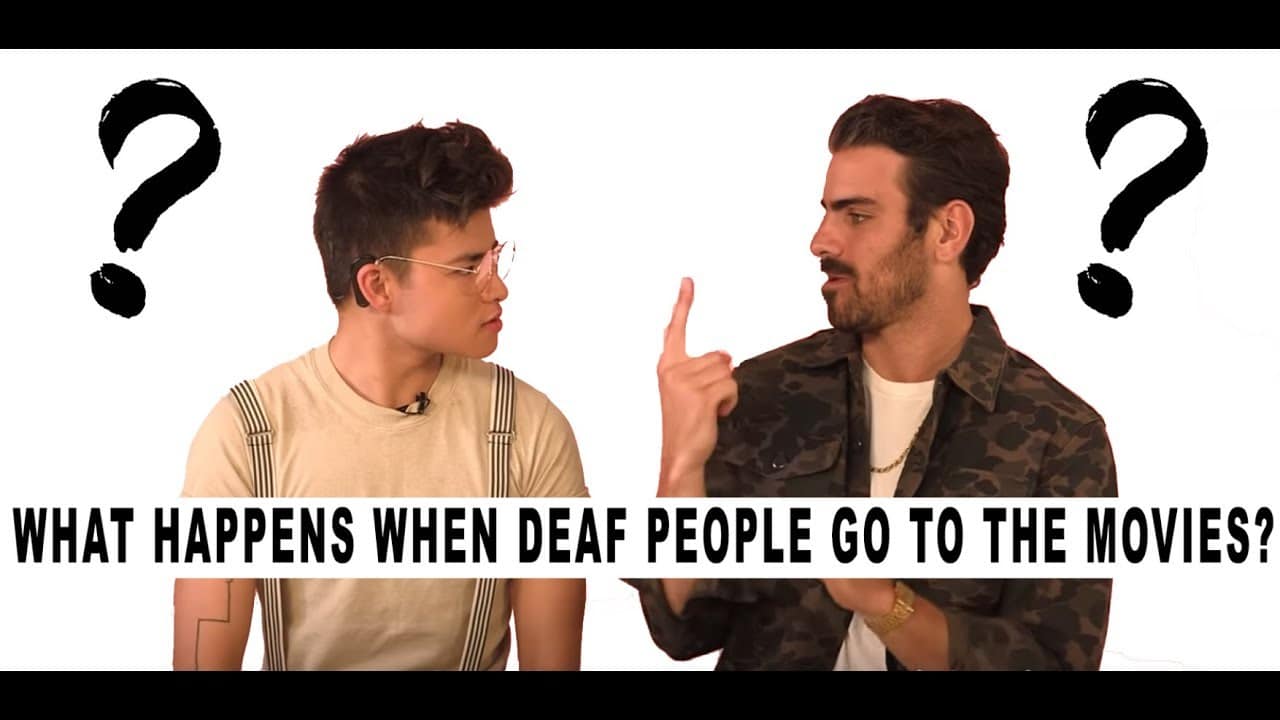
It is exciting to go to the movies and watch newly released movies; however watching movies in theaters may or may not be a fun experience for D/deaf people. D/deaf people wants to enjoy the movies just like everyone else. The only issue is that D/deaf people cannot hear so D/deaf people are unable to enjoy the movies. The movies that D/deaf people are able to enjoy more are movies that are very visual with a lot of action. Did you know closed captions did not exist back then? Today closed captions are readily available. At the movies, there are devices that can be provided for D/deaf people. There are two types of devices.
One of the devices is called CaptiView, simply secure the device in your cup holder and adjust the flexible arm to the right angle. Once your movie begins, the device will present all the dialogue in text on your screen. The first thing you do is go to the counter and request a captiview. The captiview. Then you go to concessions to get your popcorn and drink. Then you get to your seat and set up the device by connecting it to the appropriate theater. Since your CaptiView goes in your cupholder, you can hope no one next to you comes to use the other cupholder for your drink. Once you are settled in, you need to angle the CaptiView so you can see the movie and the captions with minimal tennis ball game spectator effect looking between the movie and the captions. Picking the best seat is crucial. You can pick a seat on the side and angle yourself toward the screen.Do the caption devices always work? Not always. My friend experienced the device turning off in the middle of the movie. Then what? Do you go back to the front to get a different device? You would miss part of the movie if you left the theater to exchange it. Do you watch the movie without it and try to follow along? Knowing you missed some of the crucial information, what do you do then? Do you just accept it and wait for the movie to come out to watch at home with open captions? Do you inform the theater the device stopped working? Sometimes they will issue you a free ticket for another movie.What about children? Young hearing children watching a movie listen to songs. Deaf children will use the closed caption devices; however, the younger children may not know all the words on the captions. Some parents will sign the movie for their children.
The other device is Access Glasses, what it looks like for the user is that the captions are projected on the glasses and appear to float about 10 feet away. These two devices are free as D/deaf people do not to pay to rent them. However, if the devices do not work properly, then D/deaf people can become disappointed and have to leave without being able to watch the movies.
CaptiView
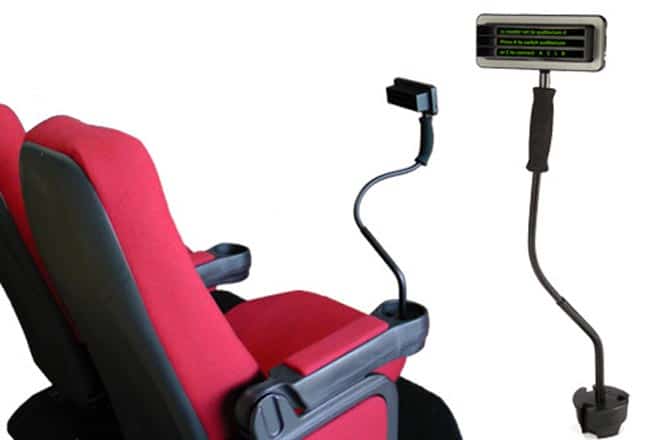


Access Glasses

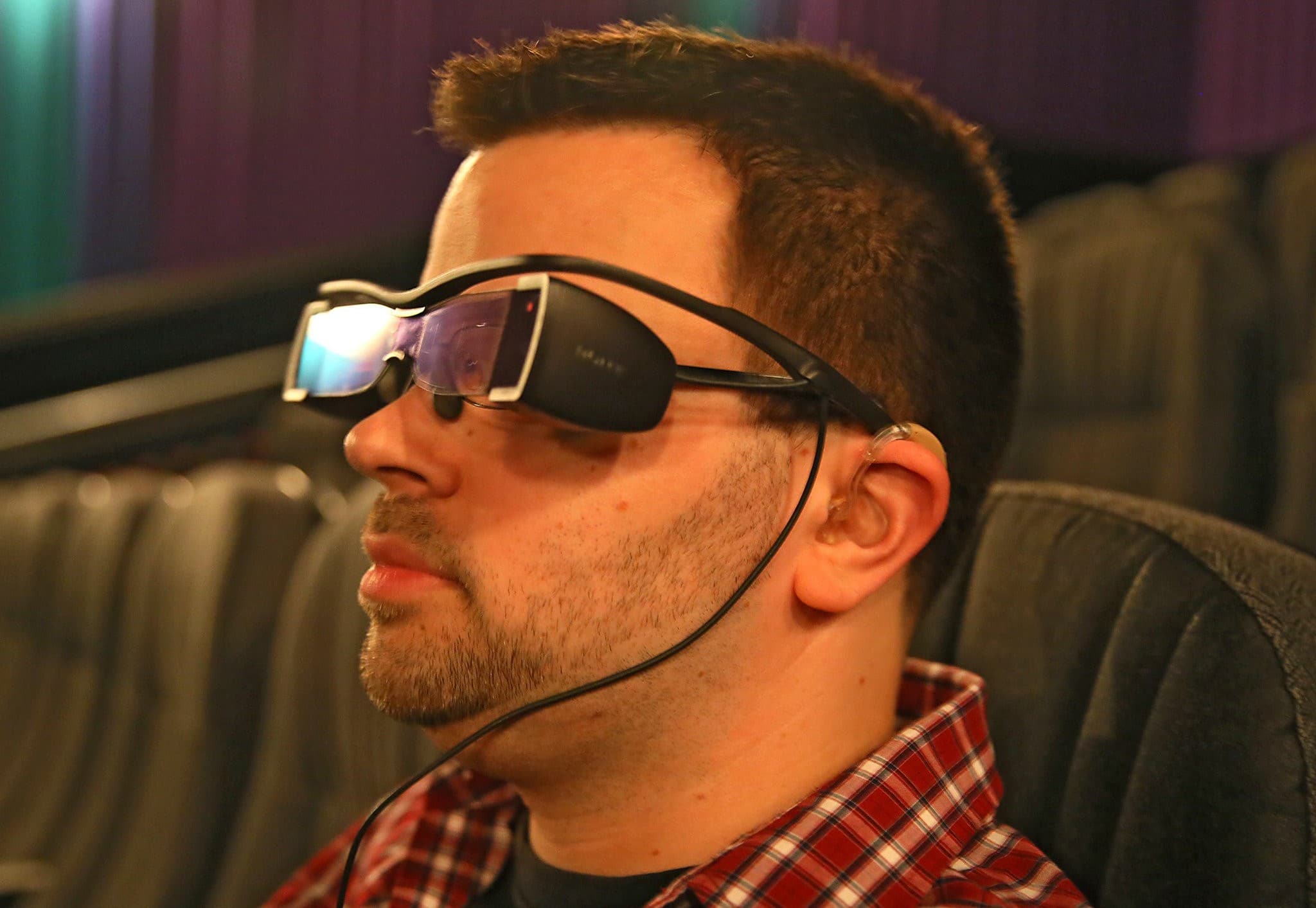
Although, these two devices are available for D/deaf people, D/deaf still prefer to watch movies at home because it is a lot more comfortable and convenient to watch movies with the captions directly on the screen. D/deaf people have complained that CaptiView and Access Glasses is uncomfortable especially AccessGlasses gives them a headache.
Now, there are places that provide open captions, which means the captions are shown on the screen. Open caption events does not happen often and when they do, they tend to be really far.
Actors can have an accent or the background music can make it hard to understand what the actors are saying. Believe it or not, hearing people actually like to watch movies with captions. My parents have told me that sometimes it is hard to understand what the actors are saying in the movie and had to turn on the captions to clarify what the actors said. They find it really helpful to have captions and they enjoy the movie a lot more.
It would nice if the movie theaters had two separate rooms showing the same movie but the difference would be one room shows with captions and the other room does not have captions. That way, D/deaf people and hearing people, if they want to watch movies with captions, can have that option available.
Now in recent movies, there is a lot more involvement of American Sign Language, D/deaf actors, documentary about D/deaf people etc. There are several movies that were a bit hit such as Quiet Place Part 1 & 2, or even won the Oscars such as CODA.
Katelyn’s personal experience using CaptiView, AccessGlasses, and no captions as the movie theater:
I have experienced both devices as well as have experienced watching the movies with no captions at all. I personally prefer CaptiView because it sits in the cupholder whereas I wear AccessGlasses. CaptiView is very similar to having the captions on the screen; although having the captions directly on the screen is better. With CaptiView, I would have to adjust until I comfortably can see the captions and the movie. The only issue I dislike about watching movies in the theater with CaptiView is that I have to sit one position the entire movie in order to clearly see the captions because the captions on CaptiView is stationary and it does not move, so if I move I would either have to move the captions where I can see it or move back to the initial position I was in. With AccessGlasses, ugh, I hated it. It was so heavy and uncomfortable especially when I had both the AccessGlasses and cochlear implant sitting on my ear. It is does not make it any better or more convenient than the CaptiView because the caption is not always in the right place and I would have to sit still in one position in order to see the captions right beneath the film. Also, the AccessGlasses is similar to wearing sunglasses so it makes the film less vibrant. I clearly remember after the movie was done, when I took off the glasses, my ear ached so badly because I had the AccessGlasses sitting on my ears for an hour and a half, which also resulted in getting a headache. I enjoyed the movie, but I would never use AccessGlasses again.
I have gone to movies with no captions; for instance drive-thru or movie showing at a park. Typically for these movies, they play older movies and these movies are ones I have already seen.
I have never experienced Open Captions yet and would like to experience it one day. A lot of D/deaf people attend these types of events because they are able to watch newly released movies with captioning on the screen, which makes the experience a lot more enjoyable.
A deaf person named Vlad shares his experience with closed captions vs. open captions in theaters:
My first experience in the US, when I went to the movie theater, I did not have captions. I was surprised and I asked the worker there where were the captions. The person told me that I needed to request for a device and I thought to myself the captions should be on the screen. I asked why don’t they provide captions on the screen and explained in Israel, they show movies with open captions no matter what theaters I go to. It is standard that all movie theaters have captions on the screen for both hearing and D/deaf people. The workers there were surprised about it. They did mention that there are events that show movies with open captions and and I asked how often. They said it is very rare and tend to not be that close by. Since that it is not that convenient to drive to watch a movie with open captions, I will tolerate watching captions using a device because I don’t want to drive that far. However, if it is a movie I really like to watch, or if it I am hanging out with friends, then I don’t mind driving far to watch movies with open captions. I would like to the movie theaters in the US to have open captions in theaters all the time or every other showings can have captions on the screen.
Megan’s experience going to the movie theater:
Like my friend Jody, E.T. was the first movie I saw at the movie theater as a young child with my twin sister. I loved the movie and started going to the movies after then. I seem to like action movies not those rom coms that require a lot of talking. i loved Steven Spielberg;s movies that are action packed. I was a big fan of Star Wars since it was full of action. I loved Home Alone when it first came out also! However, we seem to rent movies at home a lot compared to going to the movie theater since we will have captions at home. Nowadays I enjoy going to the movies but I seem to prefer open captioned movies like what you saw in CODA. I truly wish all movies come with burned in captions at certain showtimes so I wouldn’t have to worry about borrowing devices etc esp amid the ongoing COVID 19 pandemic. I love the loud acoustics at the ,movie theater and its freezing AC and the popcorn. I would go occasionally with my sister or with my pals when we really want to see a new release. I know movies are made to be seen at the theaters due to its large framing since a lot of it is cut smaller to fit the small screen on TV. I still find a way to enjoy the movie if it does not come with captions like I enjoy hearing the music in the movie itself but conversations are hard for me to follow sometimes esp in Rom Coms.
Below is a testimony of a woman named Jody Stevenson shares her experience going to the movies.



